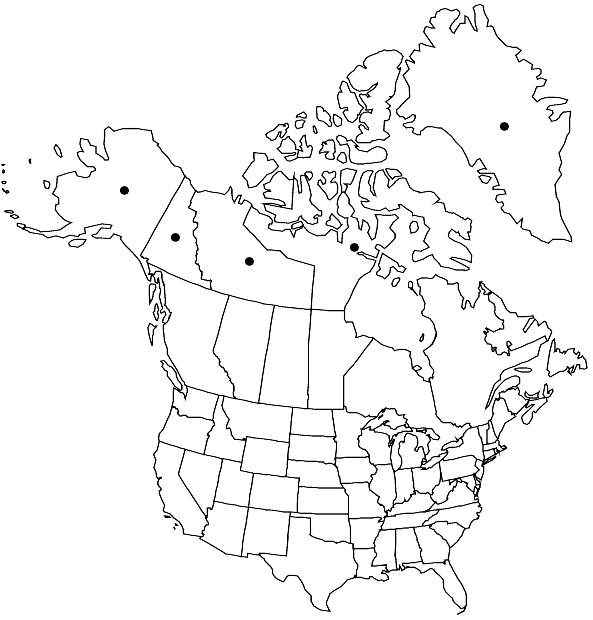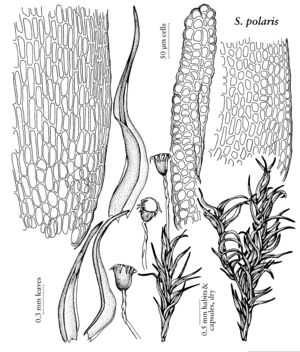Difference between revisions of "Seligeria polaris"
Kongl. Svenska Vetensk. Acad. Handl., n. s. 13(7): 41. 1875,.
imported>Volume Importer |
imported>Volume Importer |
||
| Line 41: | Line 41: | ||
|publication year= | |publication year= | ||
|special status= | |special status= | ||
| − | |source xml=https:// | + | |source xml=https://bitbucket.org/aafc-mbb/fna-data-curation/src/2e0870ddd59836b60bcf96646a41e87ea5a5943a/coarse_grained_fna_xml/V27/V27_447.xml |
|genus=Seligeria | |genus=Seligeria | ||
|species=Seligeria polaris | |species=Seligeria polaris | ||
Latest revision as of 21:26, 5 November 2020
Plants small, black to red-black. Leaves ovate-lanceolate, subulate from oblong-ovate base, bluntly acute to narrowly obtuse; costa ending in apex, filling subula; margins entire; leaf cells (1–)2:1; perichaetial leaves somewhat larger, similar to vegetative leaves, not much differentiated. Seta 2–3 mm, straight, slightly flexuose or curved, slender. Capsule ovate to obovate, slightly longer than wide, widest at mouth; peristome of 16 well-developed teeth; columella immersed. Spores (16–)17–25(–27) µm.
Habitat: Calcareous substrate
Distribution

Greenland, N.W.T., Nunavut, Yukon, Alaska, Europe.
Discussion
Seligeria polaris is known from the Canadian Arctic Islands and from northern Alaska and Yukon, and is disjunct in southwestern Northwest Territories. It is easily recognized by relatively large-sized, blackish plants; recurved-twisted leaves; long and slightly curved seta; and spores that are 17–25 µm. This species somewhat resembles Blindia acuta in color and the presence of somewhat differentiated alar cells, but is distinguished by calcareous habitat (versus acidic rock habitat in Blindia) and smaller plant size.
Selected References
None.
